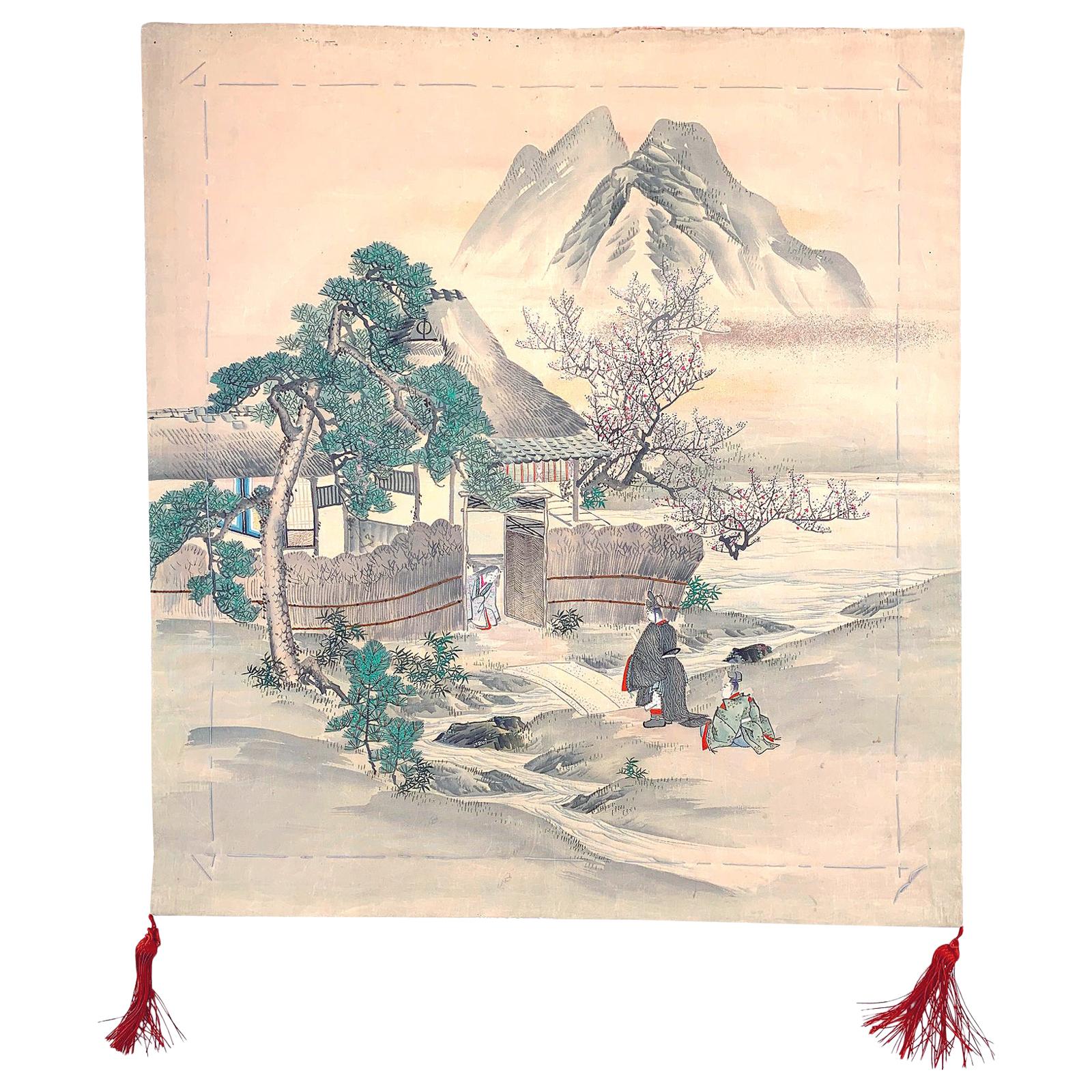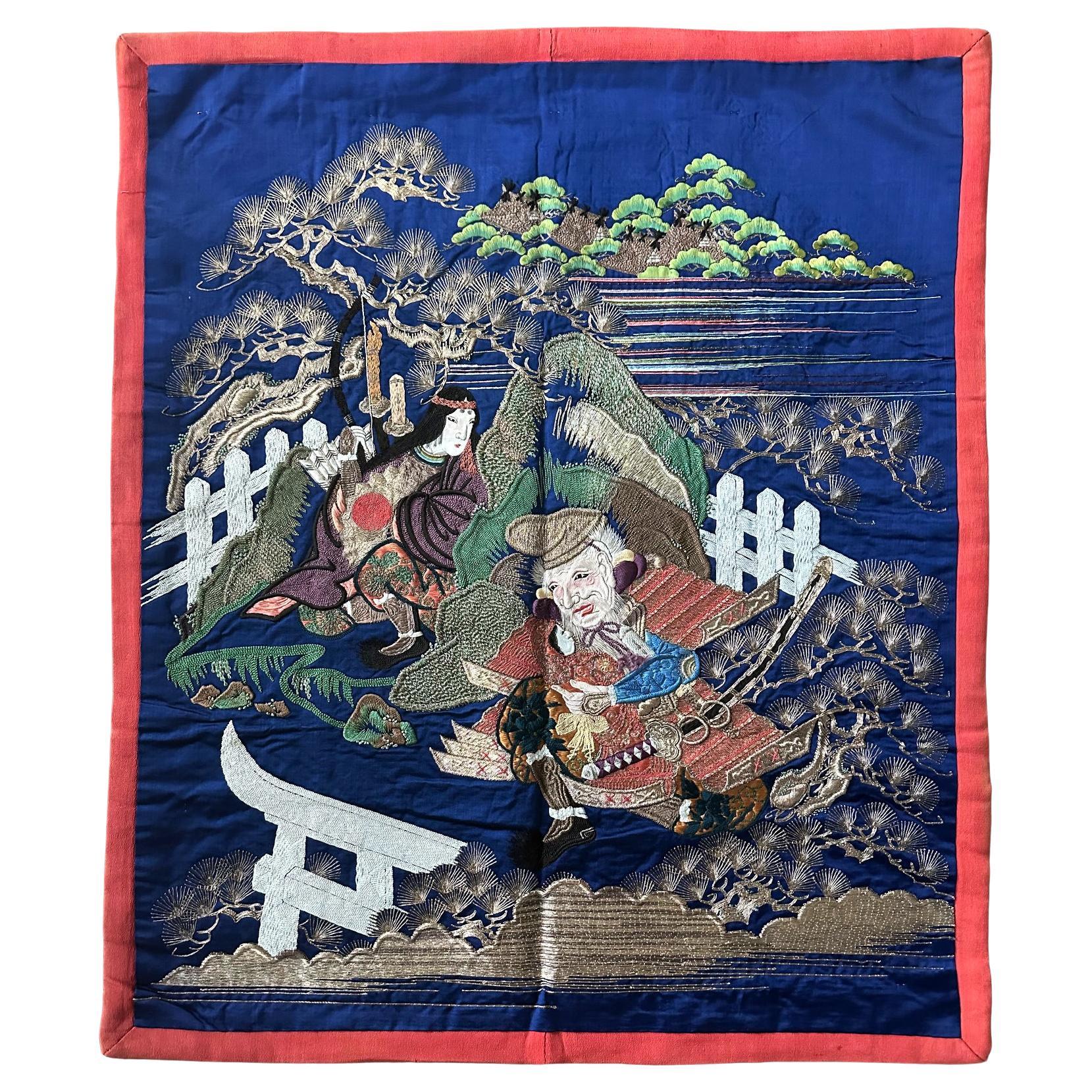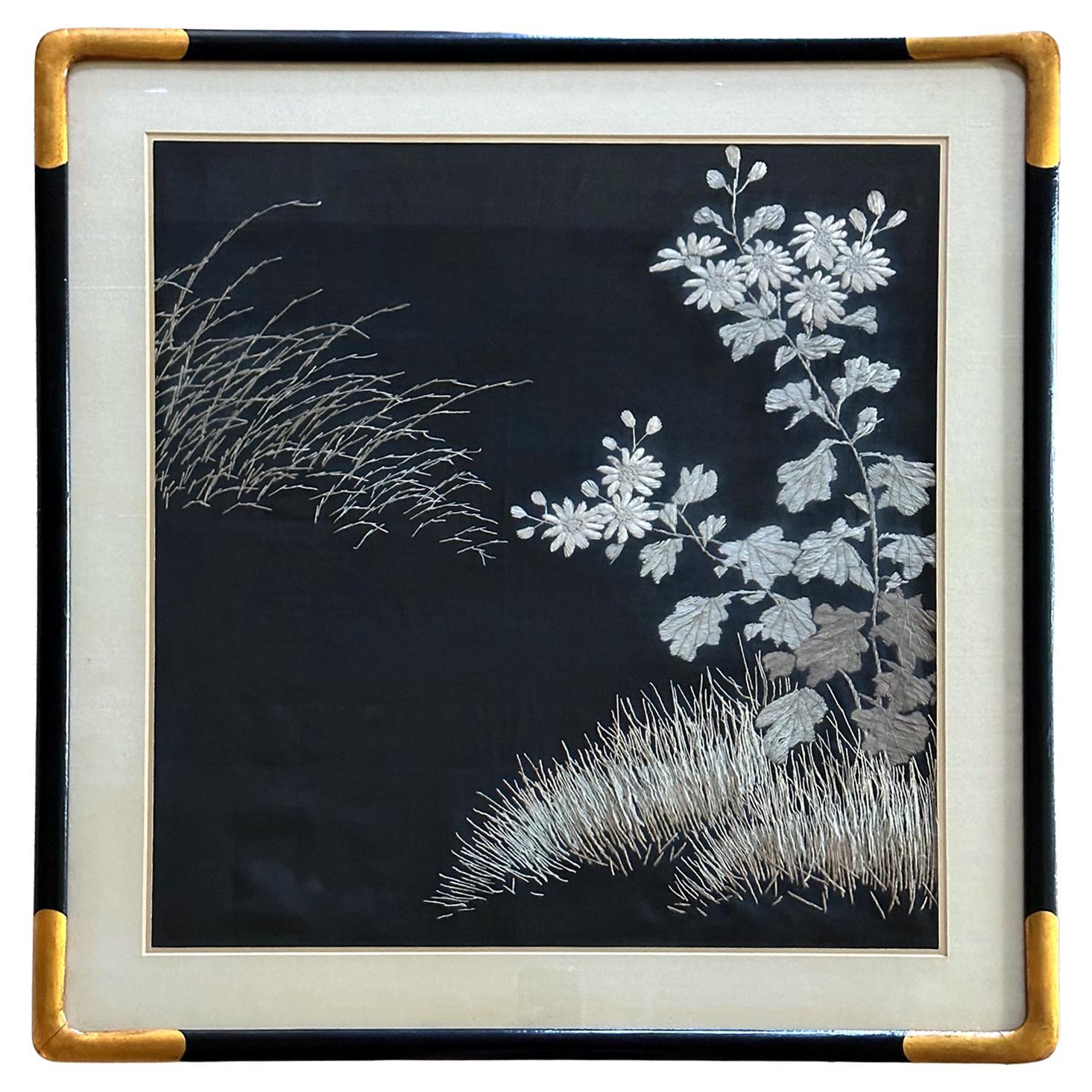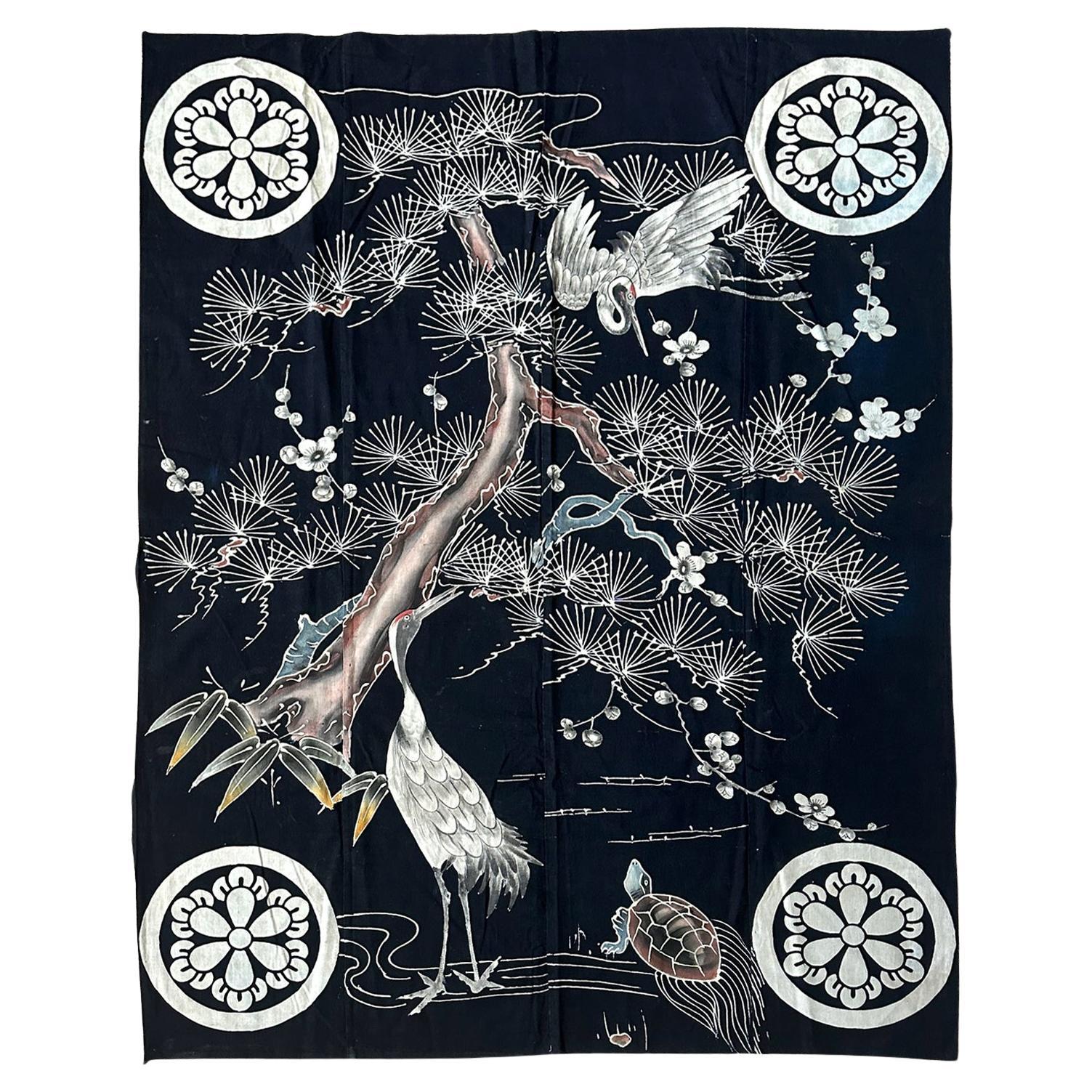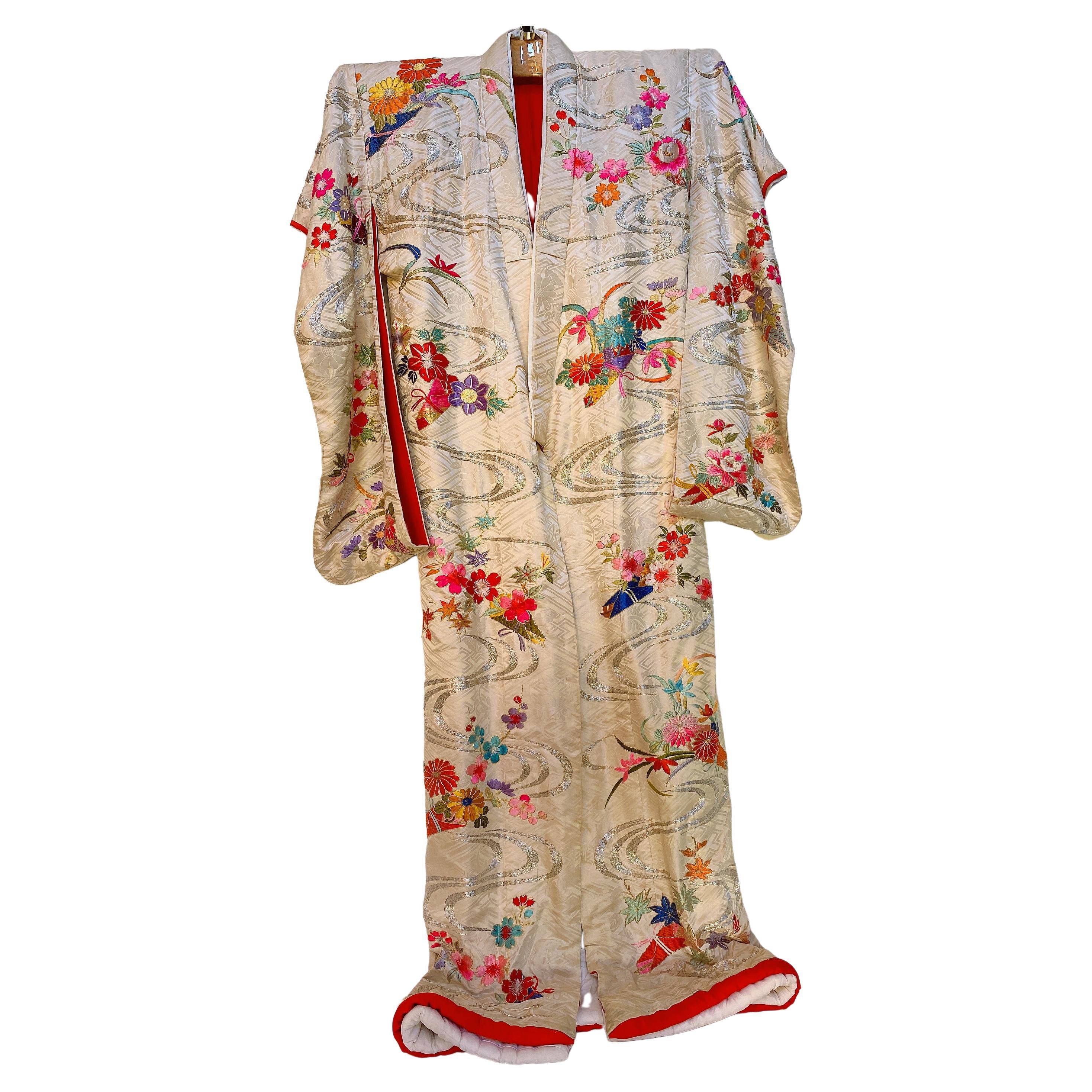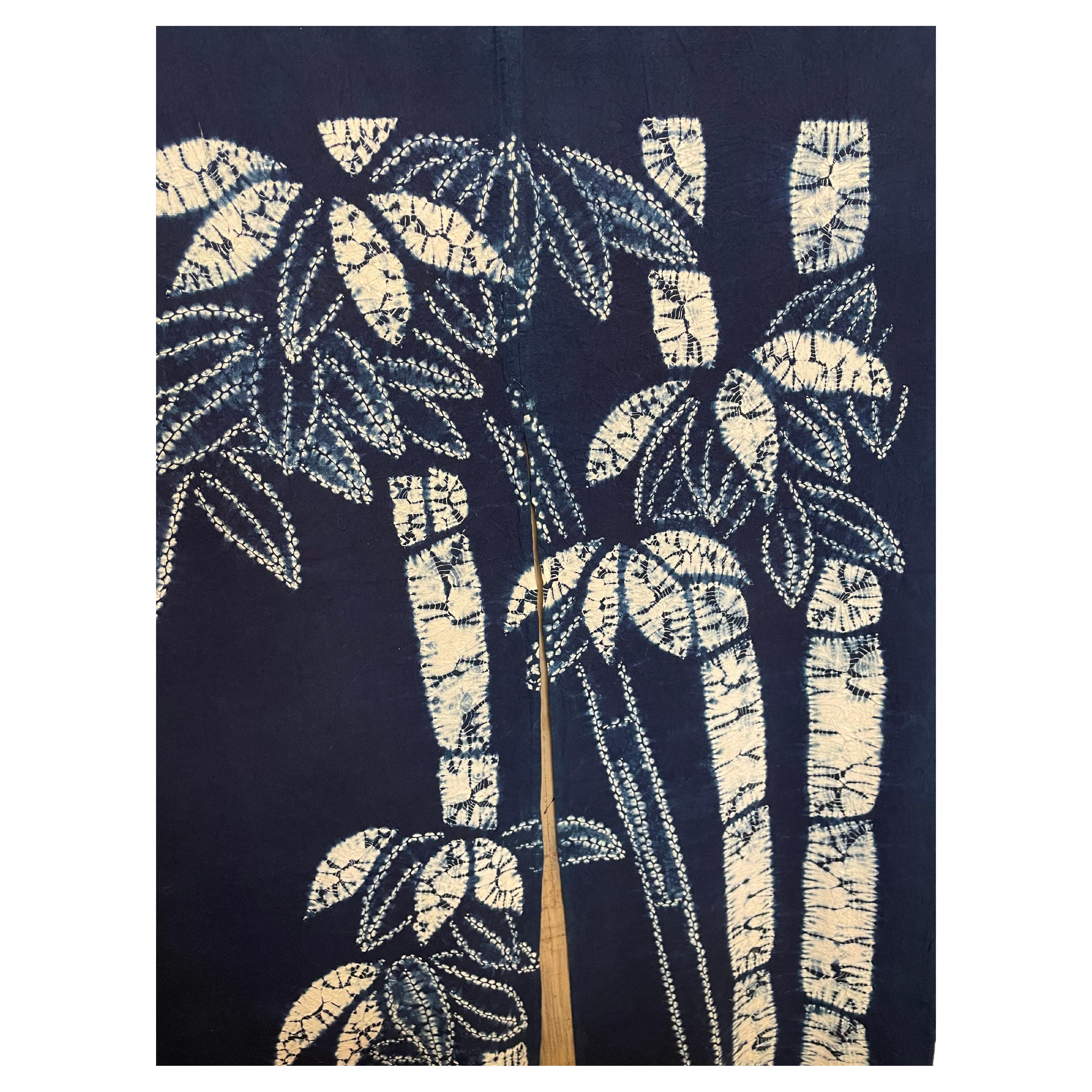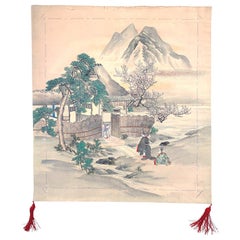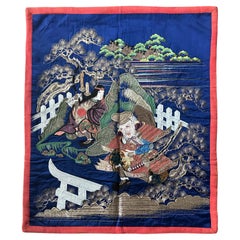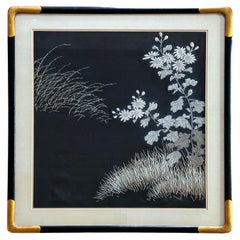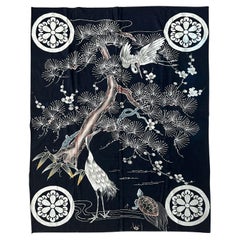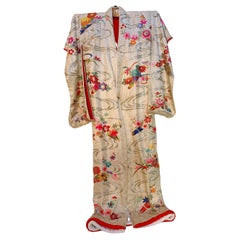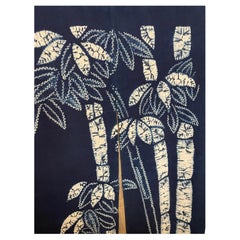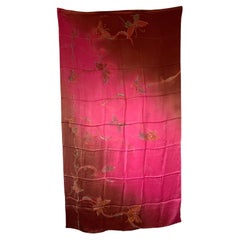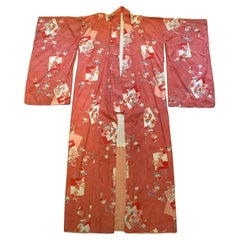Items Similar to Japanese Embroidery Silk Bamboo Fukusa Meiji Period
Want more images or videos?
Request additional images or videos from the seller
1 of 18
Japanese Embroidery Silk Bamboo Fukusa Meiji Period
$1,800
£1,365.80
€1,561.67
CA$2,514.11
A$2,795.35
CHF 1,459.58
MX$34,026.22
NOK 18,623.58
SEK 17,449.40
DKK 11,655.02
Shipping
Retrieving quote...The 1stDibs Promise:
Authenticity Guarantee,
Money-Back Guarantee,
24-Hour Cancellation
About the Item
A Japanese silk embroidery Fukusa panel circa 1890-1910s toward the end of Meiji Period. On the deep blue satin background, the artist showcases a clump of bamboos in a realistic style. Two shades of gold threads were used in the composition in order to create a depth of field by suggesting the different light reflection. Tightly embroidered threads in chain stitches with interval couched knots created a very textured surface for the big culms and nodes. Slight looser chain stitches were used to create the individual leaves. Small shadows stitches away from end of the tip of the leaves added a subtle but poetic touch, creating motion and depth of the field. Bamboo is one of the most beloved plants in Japan and found prevalently in all art forms.
The panel was lined with some interior hemp support and has a thin red raw silk border all around and the backing. It is unframed.
Fukusa panel was traditionally used as wrapping cloth for the gift presented on the important occasions such as weddings. They tend to be textile art form on their own and often showcase elaborate needlework, Yuzen dye and painting.
- Dimensions:Height: 31 in (78.74 cm)Width: 28.5 in (72.39 cm)Depth: 0.2 in (5.08 mm)
- Style:Meiji (Of the Period)
- Materials and Techniques:Silk,Embroidered
- Place of Origin:
- Period:
- Date of Manufacture:1890-1910s
- Condition:Wear consistent with age and use. Minor losses. Unframed. Some thread ruffling on the bamboo canes. Occasional loose threads. A small loss on the background silk and a small area of discoloration (last 2 pic). Border and backing silk show age wear.
- Seller Location:Atlanta, GA
- Reference Number:1stDibs: LU945043527572
About the Seller
4.9
Platinum Seller
Premium sellers with a 4.7+ rating and 24-hour response times
Established in 2006
1stDibs seller since 2010
564 sales on 1stDibs
Typical response time: <1 hour
- ShippingRetrieving quote...Shipping from: Atlanta, GA
- Return Policy
Authenticity Guarantee
In the unlikely event there’s an issue with an item’s authenticity, contact us within 1 year for a full refund. DetailsMoney-Back Guarantee
If your item is not as described, is damaged in transit, or does not arrive, contact us within 7 days for a full refund. Details24-Hour Cancellation
You have a 24-hour grace period in which to reconsider your purchase, with no questions asked.Vetted Professional Sellers
Our world-class sellers must adhere to strict standards for service and quality, maintaining the integrity of our listings.Price-Match Guarantee
If you find that a seller listed the same item for a lower price elsewhere, we’ll match it.Trusted Global Delivery
Our best-in-class carrier network provides specialized shipping options worldwide, including custom delivery.More From This Seller
View AllJapanese Antique Fukusa Textile Art Meiji Period
Located in Atlanta, GA
A Japanese silk Fukusa panel circa late 19th-early 20th century of Meiji Period. The front was beautifully decorated with Yuzen-zome, a labor intensive resist-dye technique invested by an artist monk Miyazaki Yuzensai (1654 -1736) of Edo period. The front cover likely depicts a scene from the Tale of Genji, showing a nobleman and his servant pays a visit to a lady in a fenced thatch-roof house under a high peak. The details of blossom trees and pines, as well as the characters, and scenery with a gradual color are astounding. It is telling that the Yuzen dying was used such an mastery.
The piece has a red silk backing and still retains two red tassels on the lower corners as well as decorative stitches along the edges. There is a patched design on the back likely a Mon symbol (family crest).
Fukusa is a traditional Japanese textile...
Category
Early 20th Century Japanese Japonisme Textiles
Materials
Silk
Fine Japanese Embroidery Silk Fukusa Kabuki Story Meiji Period
Located in Atlanta, GA
A Japanese silk embroidery Fukusa panel circa 1890-1910s toward the end of Meiji Period. The spectacular needlework on this piece is a tour-de-force showcasing a scene from Kabuki th...
Category
Antique 1890s Japanese Meiji Textiles
Materials
Silk
Framed Japanese Embroidery Textile Panel Meiji Period
Located in Atlanta, GA
A Japanese textile panel with embroidery needlework circa late Meiji period (1900s) presented in a gilt wood frame with silk mat. The work depic...
Category
Antique Early 1900s Japanese Meiji Textiles
Materials
Silk, Wood
Large Japanese Textile Futon Cover with Resist Yuzen Dye
Located in Atlanta, GA
A large unframed Japanese textile art circa late early 20th century toward the end of the Meiji period. Seamed together from four vertical sections of cotton in deep indigo color, th...
Category
Early 20th Century Japanese Meiji Textiles
Materials
Cotton
Japanese Silk Embroidery Tapestry Meiji Period
Located in Atlanta, GA
A spectacular Japanese embroidered silk panel beautifully presented in a gilt frame suspended in a lucite shadow box with gilt wood border. The silk picture is dated to 1890-1910s toward the end of Meiji Period, when Japanese started to participate international expose by presenting its best art and craft. Elaborate embroidered silk tapestry like this was very popular among westerners due to its superb craftmanship and also exotic subject matter that was often derived from classic Japanese folklore, mythology and various motifs. The tapestry on offer is such an example. It depicts an old couple...
Category
Antique 1890s Japanese Japonisme Textiles
Materials
Fabric, Silk, Lucite
Japanese Antique Fusuka Textile Art Meiji Period
Located in Atlanta, GA
A Japanese silk Fukusa panel circa late 19th-early 20th century of Meiji Period. The front was beautifully decorated with Yuzen-zome, a labor intensive resist-dye technique invested by an artist monk Miyazaki Yuzensai (1654 -1736) of Edo period. The auspicious composition features a group of red-crown cranes, the symbol of longevity. Three of them perch on the rock by the ocean (East Sea) an two of them are in flight. Additionally, two egrets frolic in the wave. Yuzen dying was used extensively to showcase the amazing details such as the waves and the gradual coloring effect. Embroidery was used sparsely to highlight areas such as the legs of the crane to render it more dimensional details.
The piece has a red silk backing and still retains four blue tassels on corners as well as decorative stitches along the edges.
Fukusa is a traditional Japanese textile...
Category
Early 20th Century Japanese Japonisme Textiles
Materials
Brocade, Silk
You May Also Like
Rare Spectacular Hand-Embroidered Silk Japanese Kimono
Located in Brea, CA
This highly collectable spectacular rare kimono has detailed hand-embroidery throughout accented . This ceremonial Japanese kimono is hand sewn and hand-quilted throughout.
Category
Early 20th Century Chinese Chinese Export Antiquities
Materials
Silk
Japanese Cotton Noren Screen 1990s Aizome
Located in Paris, FR
This is a screen which is called Noren.
It is dyed with the style called Aizome.
Aizome is a japanese word for indigo dye.
Indigo dye is an organic compound with a distinctive blue ...
Category
1990s Japanese Showa Screens and Room Dividers
Materials
Cotton
Hand-Crafted Silk Textile with Stunning Detailing
Located in Jimbaran, Bali
A wonderful Hand-Crafted Silk Textile from Malaysia with Stunning Detailing and shades. A wonderful decorative object to bring warmth and color to any space. This textile was hand-cr...
Category
21st Century and Contemporary Malaysian Other Textiles
Materials
Silk
Antique Japanese Silk Kimono
Located in Bedford Hills, NY
Beautiful antique Japanese silk Kimono.
Category
Early 20th Century Japanese Anglo-Japanese Textiles
Materials
Silk
Hand-Crafted Silk Textile with Stunning Detailing
Located in Jimbaran, Bali
A wonderful Hand-Crafted Silk Textile from Malaysia with Stunning Detailing and shades. A wonderful decorative object to bring warmth and color to any space. This textile was hand-cr...
Category
21st Century and Contemporary Malaysian Other Textiles
Materials
Silk
Hand-Crafted Silk Textile with Stunning Detailing
Located in Jimbaran, Bali
A wonderful hand-crafted silk Textile from Malaysia with Stunning Detailing and shades. A wonderful decorative object to bring warmth and color to any space. This textile was hand-cr...
Category
21st Century and Contemporary Malaysian Other Textiles
Materials
Silk
More Ways To Browse
Antique Silk
Meiji Period Furniture
Silk On Silk Embroidery
Silk Embroidery Art
Silk Gold Thread
Silks With Gold Threads
Antique Silk Embroidery
Gold Chain Japan
Antique Silk Embroidery Art
Antique Embroidered Gold
Japanese Embroidery
Gold Thread Embroidery
Antique Gold Embroidery
Japanese Embroidered
Antique Red Sofa
Silk Gold Thread Embroidery
Antique Silk Couch
Blue Silk Sofa
